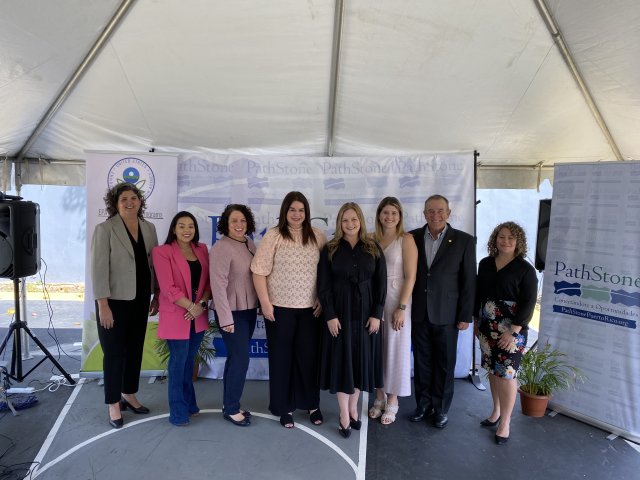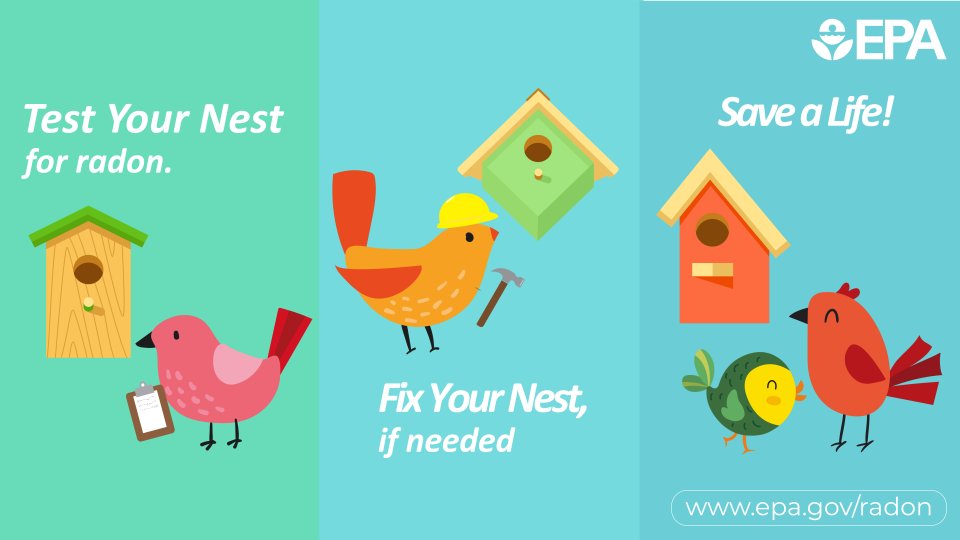NEW YORK - Today, EPA announced a major new initiative to accelerate progress toward the Biden-Harris Administration’s goal of 100% lead service line removal and replacement. EPA introduced the “Lead Service Line Replacement Accelerators” initiative at a White House summit celebrating the one-year anniversary of the Lead Pipe and Paint Action Plan and convened state and local leaders to discuss the program. New Jersey is among the first states to participate in the Accelerator initiative, an ambitious program aimed at providing targeted technical assistance services to underserved communities to replace lead pipes that endanger the health of children and families. This initiative is a partnership with the Department of Labor, Connecticut, New Jersey, Pennsylvania and Wisconsin and will work with up to 40 communities across these states in 2023. The full list of communities that will benefit from this program will be announced in the coming weeks.
"New Jersey is a trailblazer in environmental stewardship by participating in this pilot program," said Regional Administrator Lisa F. Garcia. "Far too many communities in the state and across the nation are still facing the challenge of replacing aging pipes, particularly in communities that have been historically underserved and overburdened. This program will provide crucial support and assistance to these communities and help to address this pressing issue."
“Access to safe, clean drinking water is a fundamental human right which is why replacing lead service lines and modernizing our nation’s drinking water and wastewater infrastructure is a matter of public health, environmental safety, and racial and environmental justice,” said Sen. Menendez. “Towns and cities across New Jersey are home to some of the oldest water infrastructure in the nation, which is why I have fought to bring hundreds of millions of dollars in federal funding back to the state for lead pipe replacements and drinking water improvements. I applaud the Biden-Harris administration for their commitment to 100% lead service line replacement nationwide and for including New Jersey in this four-state initiative that aims at providing assistance to underserved communities.”
“Since the passage of the Bipartisan Infrastructure Law, communities in New Jersey and across the nation have received historic levels of funding to replace lead service lines that pose a danger to the health and well-being of children and families,” said Sen. Booker. “With the launch of the new Service Line Replacement Accelerators initiative in New Jersey and three other states, underserved areas will receive targeted technical assistance as part of an ongoing and critical effort to make sure all Americans have access to safe, clean drinking water.”
“Every person, school, and business in South Jersey deserves lead-free drinking water,” said Representative Norcross. “I’m proud to have supported the funding that is now delivering for New Jersey communities by providing clean drinking water and creating good-paying jobs in replacing lead pipes that pose health risks to children and families.”
“Lead-free drinking water shouldn’t be a luxury, it should be a basic right guaranteed to everyone. I am proud to have voted for the bipartisan infrastructure law that will fund projects like this one and so many more that will work towards repairing New Jersey’s crumbling infrastructure,” said Congressman Andy Kim (NJ-03). “Many towns in my district know what it’s like being unable to trust the water coming into their home or business. That’s why I’m glad to see the EPA’s new initiative is taking the step forward that we need to make sure risk-free, safe, and healthy water is a reality for everyone in New Jersey. I look forward to keeping tabs on this project through to its conclusion because everyone deserves reliable, clean water.”
“Contaminated drinking water threatens the health and safety of our families, in our schools and in our homes — whether that’s elevated lead levels or forever chemicals like substances known as PFAS. For years now, I’ve been fighting to get clean drinking water for our families, to protect our local waters, and to claw more federal tax dollars back to Jersey from Washington. The EPA’s new ‘Lead Service Line Replacement Accelerators’ initiative will help ensure Jersey’s most underserved communities receive the start-to-finish assistance they need to replace lead pipes and claw back investments from the Bipartisan Infrastructure Bill that I helped shape and pass. With these federal tax dollars that we get back to North Jersey, we’re able to ease the burden on town and county budgets, help us lower taxes for our families, and, most importantly, protect our families,” said U.S. Congressman Josh Gottheimer (NJ-5).
“Every American has a fundamental right to safe, clean drinking water. That’s why I fought for funding in the Bipartisan Infrastructure Law to replace lead service lines quickly and equitably. No community should be left to face the health risks stemming from lead pipes any longer,” said Rep. Frank Pallone, Jr., Ranking Member of the House Energy and Commerce Committee. “I’m thrilled that EPA is providing much needed assistance to fast-track the removal and replacement of toxic lead pipes, and I commend Administrator Regan for working diligently to target those communities most impacted. This is another significant step toward ensuring that every family can trust the water coming out of the tap. I look forward to this resource expanding to help other communities in need.”
“I commend the Biden Administration for their steadfast efforts to ensure clean and safe drinking water for our residents. I have for years led federal efforts to replace lead pipes in our communities and I am thrilled to have partners in the White House as well as on the state and local levels here in New Jersey. Last week we announced $2.4 million in federal funds to replace lead pipes in Garfield. That funding combined with this announcement today shows that Democrats on all levels of government are committed to modernizing our infrastructure and guaranteeing clean water for all. This is tremendous news for the Garden State.” - U.S. Congressman Bill Pascrell, Jr.
“I applaud the Biden-Harris Administration and EPA for this new initiative to help provide clean drinking water to underserved communities,” said Rep. Donald M. Payne, Jr. “This issue is extremely important to me because underserved communities suffer the most from lead-contaminated water pipes. I have worked diligently to provide resources to these communities to remove these dangerous pipes. I helped secure $169 million to improve New Jersey’s water infrastructure in the Bipartisan Infrastructure Law to help our state. In addition, I worked to include $55 billion to replace lead-contaminated water pipes in New Jersey and nationwide. Again, I am proud to support this initiative because all Americans deserve clean drinking water.”
“Old lead pipes threaten the health and safety of too many towns and families throughout my district and New Jersey. That’s why I am proud to have fought for the passage of the Bipartisan Infrastructure Law, which provides our state with the federal support it needs to improve our water infrastructure without putting a financial burden on our local municipalities,” said Rep. Mikie Sherrill (NJ-11). “I look forward to seeing this initiative come to fruition and supporting local communities.”
“I’m proud to have voted for measures that would mitigate the harmful effects of lead water pipes, address potential contaminants in our water, and ensure that everyone in our state has access to clean drinking water,” said Rep Watson Coleman. “This historic investment made possible by the Bipartisan Infrastructure Law is a crucial step toward building a sustainable, secure and healthy future for New Jersey."
“Our historically underserved communities know all too well the severe damage that lead exposure can inflict upon children and families,” said New Jersey Governor Phil Murphy. “As a result of my Administration’s aggressive and ongoing lead pipe replacement efforts, we also know that no state in the country is better suited to continue serving as a national model for lead remediation than New Jersey. We are eager to continue working alongside our federal and regional partners to eradicate this grave public health threat once and for all.”
“In partnership with the Biden-Harris Administration, New Jersey is accelerating its efforts to better protect every resident from the risk of lead exposure by helping communities to identify lead pipes and access funding for their replacement," said Shawn M. LaTourette, New Jersey's Commissioner of Environmental Protection. "Thanks to the historic amount of investment made possible by the Bipartisan Infrastructure Law, New Jersey will be home to a Lead Service Line Replacement Accelerator program that will empower communities large and small with the knowledge and resources necessary to get the lead out of our water and away from our kids. The Murphy Administration is proud to lead this new effort alongside several of our sister states and the incredible people of the U.S. Environmental Protection Agency and its Office of Water."
Through the Lead Service Line Replacement (LSLR) Accelerators, EPA will provide hands-on support to guide communities through the process of lead service line removals, from start to finish. This will include support in developing lead service line replacement plans, conducting inventories to identify lead pipes, increasing community outreach and education efforts, and supporting applications for Bipartisan Infrastructure Law funding. As a result, more communities will be able to access their fair share of federal funds to secure a lead-free future.
Partnership is core to the LSLR Accelerators initiative. EPA will collaborate each step of the way with Connecticut, Pennsylvania, New Jersey, and Wisconsin and applauds their leadership in seeking innovative new ways to accelerate lead pipe removal. The Accelerators initiative will support these states in more strategically deploying funding from the Bipartisan Infrastructure Law (BIL) for lead service line replacements while developing best practices and creative approaches that can serve as a roadmap for the rest of the country. As this program moves forward, EPA and the Department of Labor will collaborate to provide tools aimed at increasing job quality standards, equity, and resources to accelerate the development of the skilled water workforce needed to undertake these community and system-wide lead service line replacement programs.
The LSLR Accelerators initiative represents another step forward by the Biden-Harris’s commitment to achieve 100% lead free water systems. In November 2021 President Biden signed the historic Bipartisan Infrastructure Law, which invested an unprecedented $50 billion in the nation’s water and wastewater infrastructure, including $15 billion dedicated to lead service line replacement and $11.7 billion of general Drinking Water SRF funding that can also be used for lead service line replacement. In December 2021, the Biden-Harris Administration released its Lead Pipe and Paint Action Plan. EPA is committed to using every tool available— statutory authority under the Safe Drinking Water Act, technical assistance, funding for lead service line replacement, and more—to protect all Americans from lead in drinking water.
With the help of Bipartisan Infrastructure Law funding, EPA is boosting its technical assistance efforts in order to ensure every community gets its fair share of this historic investment. For more information about water technical assistance for communities and the Lead Service Line Replacement Accelerators, please visit. https://www.epa.gov/water-infrastructure/water-technical-assistance.
Background
All communities deserve access to safe, clean, lead-free water. Yet too many families and children across America are still impacted by lead pipes. The science is clear that lead pipes pose serious health risks, particularly for children. However, many communities, particularly underserved communities and communities in rural and inner urban areas, lack necessary tools and resources to make rapid progress on lead service line replacement.
The primary source of lead in drinking water, when present, is pipes. Lead can be harmful to human health even at low exposure levels and can accumulate in the body over time. In children, low levels of exposure have been linked to damage to the central and peripheral nervous system, learning disabilities, shorter stature, impaired hearing, and impaired formation and function of blood cells.
Follow EPA Region 2 on Twitter and visit our Facebook page. For more information about EPA Region 2, visit our website.
23-007
from EPA News Releases https://ift.tt/nDCaXoT


